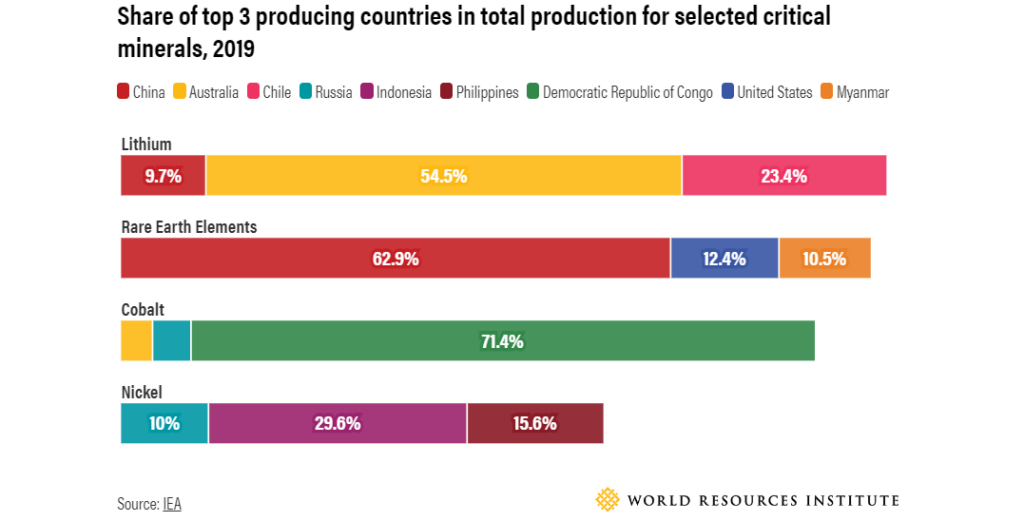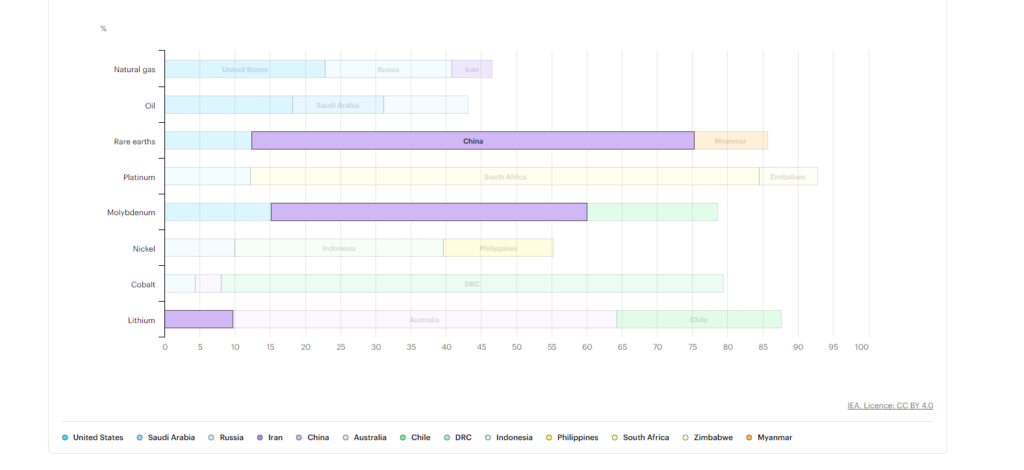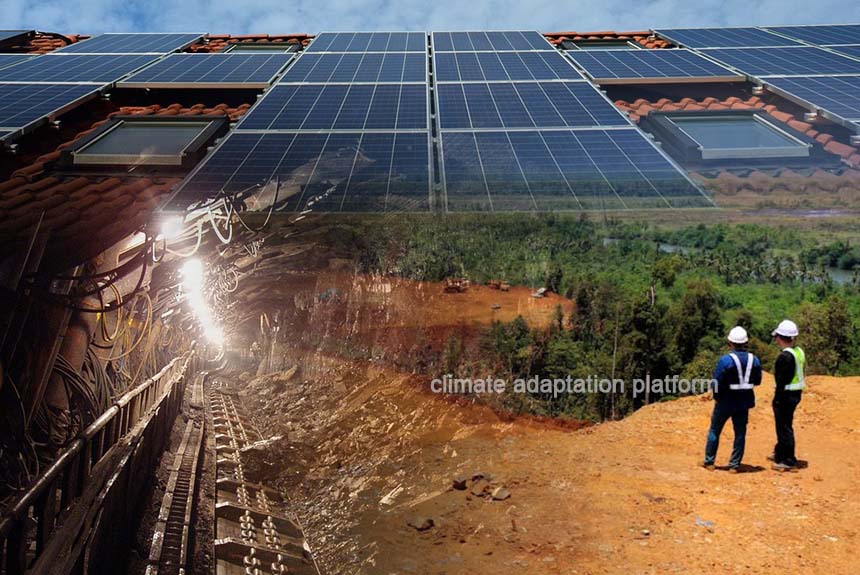In recent years, the US has made significant infrastructure investments and passed laws such as the Inflation Reduction Act and the Bipartisan Infrastructure Law to help reach its GHG reduction targets, particularly achieving Net Zero by 2050.
This includes investments in expanding EV adoption, EV charging infrastructure, and renewable energy generation. However, to reach its low-carbon transition goals successfully and sustainably, the US must secure sufficient and necessary capital resources.
The WRI article discusses the United States’ current situation and challenges as it transitions to cleaner energy.
The article notes that the US is heavily reliant on importing critical minerals like lithium, graphite, rare earth elements, and cobalt—the materials used to make wind turbines and solar panels, EV batteries and motors, and renewable energy transmission. China controls the processing of these critical and rare earth minerals, which many see as a serious threat to US supply chain security.
Second, the country engages in limited mining due to environmental and health regulations and because many mineral deposits are close to Indigenous lands.
Out of the 50 listed as critical minerals in the US, at least ten of them are needed for clean technology transition, which are Lithium, Cobalt, Nickel, Zinc, Aluminum, Neodymium, Praseodymium, Dysprosium, Terbium, and Graphite.
How many critical minerals would the US need to meet its climate goals?
The International Energy Agency report shows that mining the following minerals will need to increase substantially to meet the Paris Agreement to limit warming below 2C or ideally to 1.5C. The graph from the IEA shows how much the demand for lithium, nickel, cobalt, and graphite would need to grow to meet this goal from 2020 to 2040.

The blue bar shows the demands under the Sustainable Development Scenario (SDS), and the red dot under the IEA’s Stated Policies Scenario (STEPS) or based solely on the measures and initiatives currently in place. It predicts that if nothing were to change, emissions would remain at the same level today. Under this scenario, global warming would rise to 2.6 degrees by 2050.
Among the critical minerals, lithium shows the highest demand (over 40 times under the SDS), followed by graphite, cobalt, nickel, and other minerals.
The WRI article notes that the United States will also feel this global demand as it tries to expand its clean energy deployment, such as solar, wind, EVs, battery storage, and electricity transmissions, which will require massive amounts of critical minerals.
As the country limits mining these minerals in its homeland, it relies on importing them from other countries. Below is a WRI graph showing where the US sources these critical minerals.

Below is another IEA chart showing the top-producing countries that produced the selected resources and minerals in 2019.

The Inflation Reduction Act tax credit requires that a certain percentage, or at least 40%, of critical minerals be extracted or processed in the United States or a country with which the US has a free trade agreement. This percentage increases steadily until 2027 when it becomes 80%.
However, to have the total Clean Vehicle Tax Credit of the IRA of up to $7500, at least 50% of the battery components must be domestically made or assembled. The figure will increase to 90% after 2027.
In addition, the WRI article notes that starting in 2025 for critical minerals and 2024 for battery components, EVs will no longer qualify for the EV tax credit if they are sourced from a “foreign entity of concern,” such as China.
In addition to Electric Vehicle purchasers, the tax credit is also offered to clean technology manufacturers at 10% per unit cost of production if the product is made locally.
The stable and sufficient supply of critical materials will hinge on satisfying the IRA’s requirements and meeting the United States’ clean energy and GHG emissions goals. The US faces challenges—it could mine some of these vital minerals locally or source them from countries with free trade agreements, such as Australia, Chile, Peru, high-producing countries, or China.
The article notes that China has been known to use its dominance in the critical market as a political tool.
Mining these minerals poses a high risk to the environment and the health of local communities, causing pollution, water depletion, and biodiversity loss. This affects the Indigenous and poor communities the most.
The article notes that the world needs more than 300 mines to meet the demands of making EV batteries alone. The US could increase mining to meet these demands. Sourcing these minerals within the country will also ensure high environmental and safety standards are adhered to.
Almost all mines in the US must comply with the requirements of several environmental laws and overcome the permitting and litigation hurdles associated with developing new mines. This is no easy feat, as going through the National Environmental Policy Act (NEPA) alone could take decades. The article recommends how the US can increase mining for critical minerals and how they could establish guardrails when importing them from other countries.
Sources:
Barbanell, M. (2023, May 3). Overcoming Critical Minerals Shortages Is Key to Achieving US Climate Goals. WRI. Retrieved from https://www.wri.org/insights/critical-minerals-us-climate-goals?
Mineral requirements for clean energy transitions. IEA. Retrieved from https://www.iea.org/reports/the-role-of-critical-minerals-in-clean-energy-transitions/mineral-requirements-for-clean-energy-transitions#overview
Share of top 3 producing countries in total production for selected resources and minerals, 2019. (2020, April 23). IEA. Retrieved from https://www.iea.org/data-and-statistics/charts/share-of-top-3-producing-countries-in-total-production-for-selected-resources-and-minerals-2019
Growth in demand for selected minerals from clean energy technologies by scenario, 2040 relative to 2020. (2021, May 5). IEA. Retrieved from https://www.iea.org/data-and-statistics/charts/growth-in-demand-for-selected-minerals-from-clean-energy-technologies-by-scenario-2040-relative-to-2020



Leave a Reply